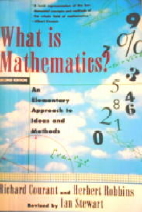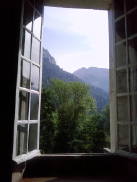Understanding the neural functions that contribute to the birth of mathematical structure and meaning is an active subject of research in cognitive science. A significant amount of work has been done to identify an innate ability we share with other creatures, namely the ability to perceive quantity. This is sometimes called our approximate number sense. Finding a path from this talent to how we come to use the symbolic representations of mathematics is certainly challenging. And a recent study published in Science contributes what is, perhaps, an unexpected observation. Researchers participating in the study observed that numerosity (defined as the set size of a group of items), while processed by the association cortex, mirrors the properties of primary sensory processing. Specifically, the neurons tuned to small numerosities follow topographical principles. These are principles associated with topographic representations that occur in vision, for example. In other words, neighboring points on the retina correspond to neighboring neural responses as the retina’s data is mapped to the cortex. The mapping is smooth, perhaps continuous in the mathematical sense. It is true that formal mathematical abilities, the ones we are trained to do, rely on different cognitive processes, but studies have found that individual differences in an innate number sense and other mathematical abilities are correlated. The Science paper not only suggests that topographic mappings may be active in higher-order cognitive processes, but also that number sense shares something with the primary senses.
Our results demonstrate that topographic representations, common in the sensory and motor cortices, can emerge within the brain to represent abstract features such as numerosity. Similarities in cortical organization suggest that the computational benefits of topographic representations, for example efficiency in wiring, apply to higher-order cognitive functions and sensory-motor functions alike. As such, topographic organization may be common in higher cognitive functions. On the other hand, topographic organization supports the view that numerosity perception resembles a primary sense. These views are not mutually exclusive, but both challenge the established distinction between primary topographic representations and abstracted representations of higher cognitive functions.
It seems to me that the brain is a remarkable system that integrates everything that the body detects in sensation. And that the paths of this integration are continuous, from the most fundamental to the most complex. I recently had a conversation with my daughter about reading. For whatever reason, my daughter resists the idea that words on the page are symbolic representations of sounds. And this resistance inhibits her ability to read new words. There was a time when she needed to read out loud in order to fully comprehend what she was reading. And now, while she’s made significant progress reading to herself, it will happen that the words on the page aren’t making sense. But if she hears them, meaning is immediately comprehended. As we talked about it, I told her that her brain was doing an amazing thing when it translated something it was seeing into the meaning that was carried in sound. This action is another kind of integration of various cognitive processes. A systematic approach, contained in our biology, allows the body to build meaning over and over again. This conversation came to mind again today, when I read today about language in a recent piece on scientificamerican.com by Joshua Hartshorne. Hartshorne makes the following observation:
The second striking feature of language is that when you consider the space of possible languages, most languages are clustered in a few tiny bands. That is, most languages are much, much more similar to one another than random variation would have predicted.
This design-constraint is interesting if you consider that there is likely a design-constraint on every aspect of cognition, on everything that we think we know. Perhaps this is a consequence of the way cognitive processes are consistently integrated. And, I would argue, that while mathematics is full of its own design constraints, the magic of what it does is found in the extent to which it can provide eccentric possibilities, or let more into the constrained system, by providing a uniquely thorough investigation of its own constraints.


Recent Comments